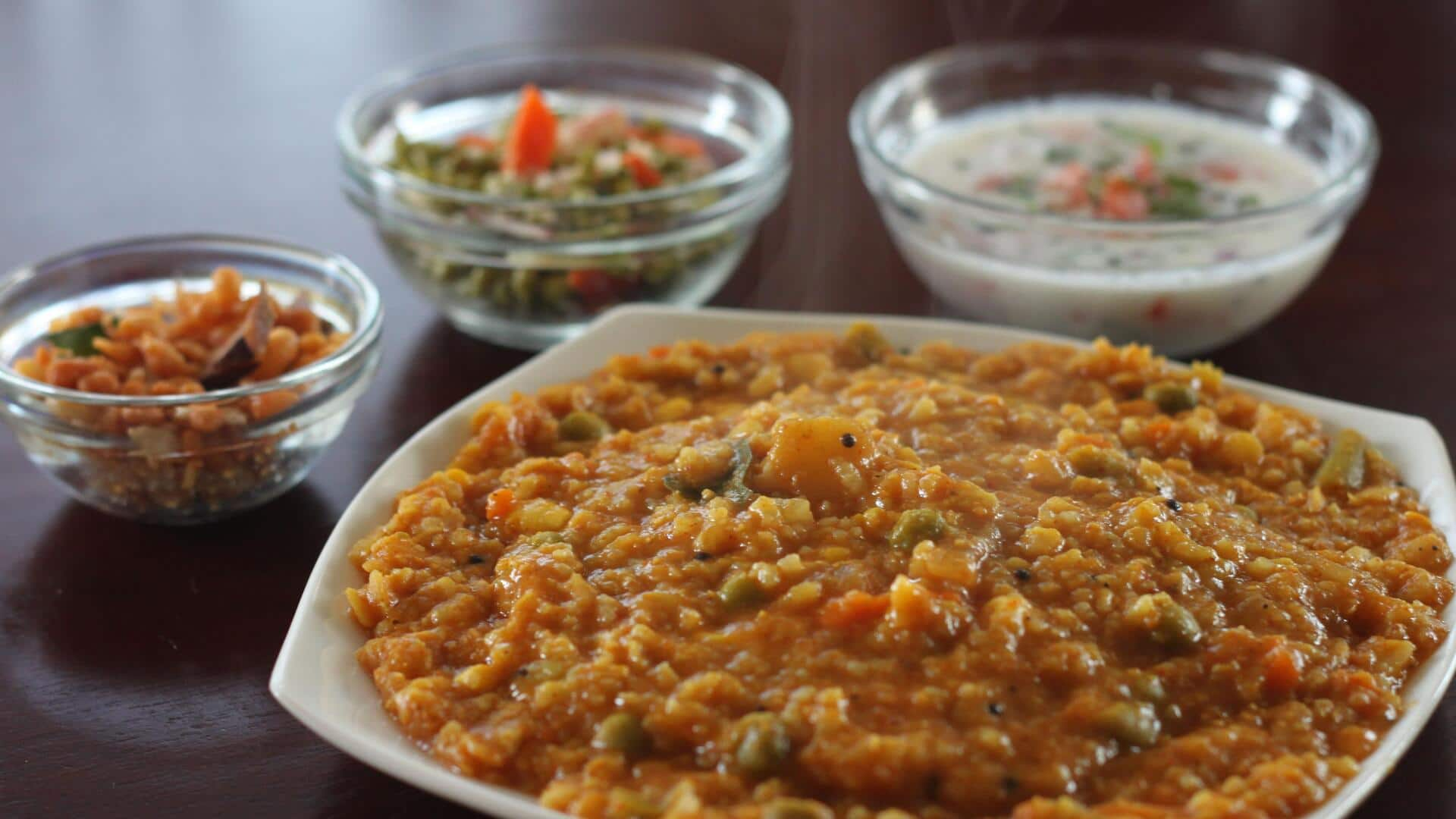
The journey of bisi bele bath: History, origin, and variations
What's the story
Traditional Karnataka dish bisi bele bath has made its mark on the global food scene with its distinctive flavor. A spicy rice and lentil dish, bisi bele bath is a common staple in most South Indian households. Its name means "hot lentil rice," which perfectly describes its warm and comforting nature. Over the years, bisi bele bath has crossed borders to become a favorite worldwide for its rich taste and nutrition.
Traditional beginnings
Historical roots in Karnataka
Originating from the kitchens of Karnataka, bisi bele bath was originally prepared as an entire meal for farmers. The rice, lentils, vegetables, and spices ensured that they got the required nutrients and energy. Traditionally, cooked over the wood fire in a clay pot, this dish was an essential part of local festivals and gatherings. It was prepared with utmost care to get the flavors right.
Key components
Ingredients that define bisi bele bath
The main constituents of bisi bele bath are rice, lentils (toor dal), tamarind pulp, jaggery, coconut oil or ghee (clarified butter), and a variety of spices including mustard seeds and curry leaves. Other vegetables like carrots, beans, peas, and potatoes are also added for texture and nutrition. The unique flavor is attributed to a special spice mix called bisi bele bath powder.
Global variations
Modern adaptations worldwide
As bisi bele bath became a hit beyond India's borders, chefs worldwide started experimenting with its variations without losing its essence. Some versions use quinoa or brown rice instead of the traditional white rice for health-conscious diners. Others introduce nuts or dried fruits for additional flavor profiles. These adaptations have made the dish more accessible to diverse palates around the world.
Cooking advice
Tips for making authentic bisi bele bath at home
To prepare authentic bisi bele bath at home, use fresh ingredients. Make sure your spice mix is aromatic. Cook lentils until soft but not mushy. Add vegetables towards the end so they retain some crunch. Adjust tamarind according to taste preference. Serve hot with papadums or raita on the side if desired.